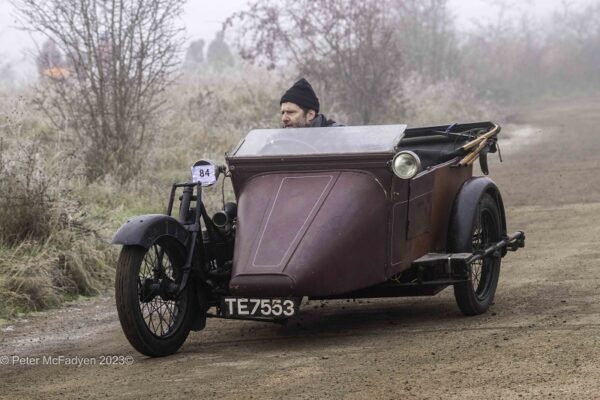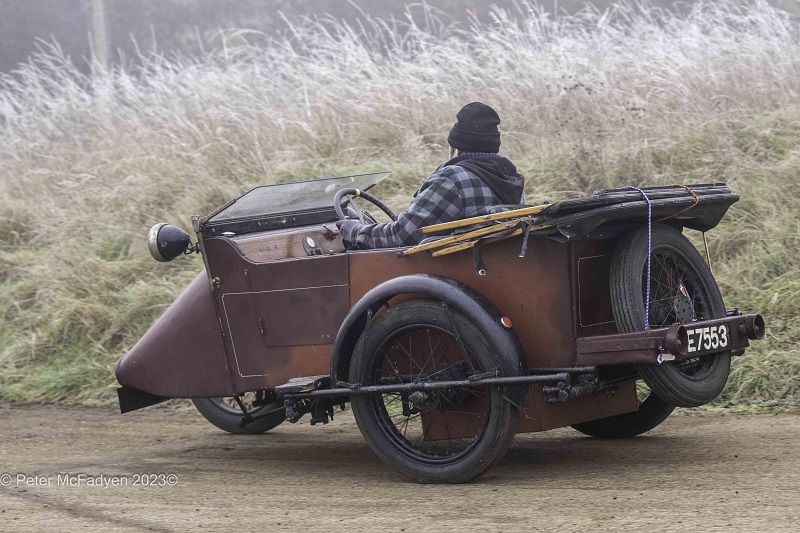
Our Snapshot this week shows Frazer Sloan competing in early December 2023 at the VSCC Driving Tests at Bicester Heritage in a 1924 Seal Family Model, a 3-wheeler much like a motorcycle and sidecar but with four seats and full weather protection.
The Seal name derives from “Safe, Economical And Light”. It was a motorcycle produced in Hulme, Manchester by Haynes & Bradshaw from 1912 to 1920 and then until 1924 by Seal Motors Limited. At this time, there were few alternatives available to those for whom a car was too expensive. Cyclecars arrived around 1910, but the most popular solution for the impecunious was the motorcycle and sidecar. The Seal developed the sidecar concept by installing both the driver and the passenger in the sidecar and leaving the motorcycle part of the combination on the right. The Seal was powered by a JAP V-twin engine with a three-speed gearbox mounted on a frame built from straight tubing, with belt final drive; the front fork was connected to a steering wheel in the sidecar.
Initially the steering was controlled with a lever, the brakes of the motorcycle with a hand lever and those of the sidecar with the foot. In 1914, the engine capacity was increased from 770 to 980cc and the belt transmission was replaced by a chain. The lever steering gave way to a steering wheel. In 1920, the chassis was redesigned and the Seal gained shaft drive.
In 1930 Haynes & Bradshaw introduced a commercial version called Progress. To increase the load capacity, the driver sat on the motorcycle instead of the sidecar – but was protected by a small cab with open sides.
The Seal was not totally unique. In 1911 Magnet of Berlin offered the model “Selbstfahrer” (literally “Self-driver”) and in 1920 Scott introduced the “Sociable”, a tri-car which remained in production until 1925.
Peter McFadyen, who took these photographs, told us that the Seal was “the subject of much interest” at the Bicester event. That is understandable…
Photos by Peter McFadyen. See his website: http://petermcfadyen.co.uk








The name is actually ‘Sociable, Economical And Light’ (not ‘Safe’)
The only other, near identical survivor, now resides in the USA.